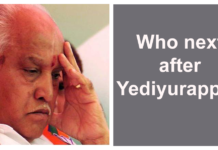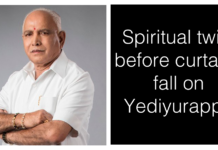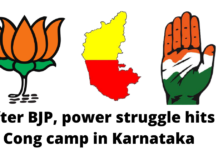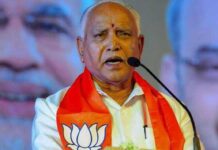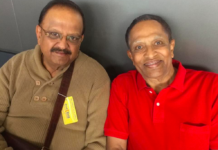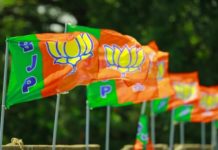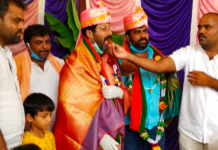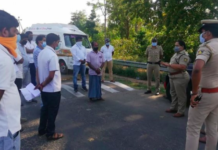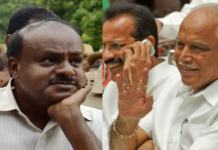BJP has suffered two strokes – one from UP and other from AP. But will this lead to a paralysis as the saffron brigade heads for a general elections?
Ahead of the summer, the BJP seems to have suffered two major strokes – one in the UP heartland and the other in Andhra Pradesh. While the one in AP where Chief Minister Chandrababu Naidu withdrew his TDP from the NDA was expected, the UP one was a big jolt.
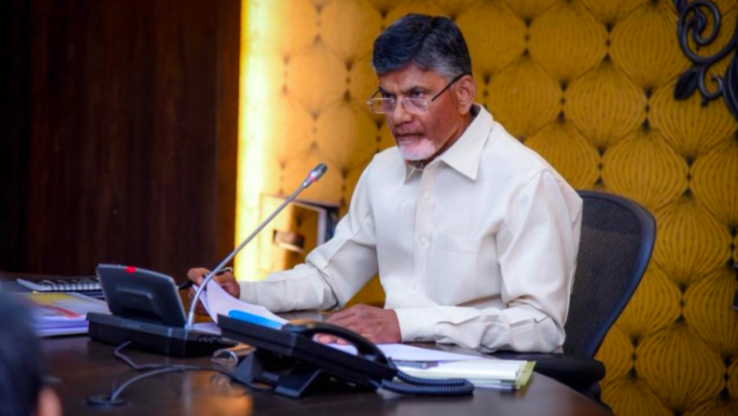 Naidu withdrew support over not getting special status for AP. It was a move to protect his own vote base rather than an anger directed against the NDA. But to get defeated from the bastion of Chief Minister Yogi Adityanath and from a seat held by the saffron party for 27 years is indeed a big stroke. But will this stroke lead to a paralysis in the BJP? That is the question being debated today.
Naidu withdrew support over not getting special status for AP. It was a move to protect his own vote base rather than an anger directed against the NDA. But to get defeated from the bastion of Chief Minister Yogi Adityanath and from a seat held by the saffron party for 27 years is indeed a big stroke. But will this stroke lead to a paralysis in the BJP? That is the question being debated today.
The Samajwadi Party won the two recent by-elections in Gorakhpur and Phulpur with large margins. There is no doubt that these are strong signals ahead of the upcoming general elections. They are also clear warning alarms for the UP Chief Minister and his deputy, Keshav Prasad Maurya, who had held those seats.
These results, and the RJD victory in the neighbouring state of Bihar, have given the fragmented opposition a template for 2019. No wonder that BSP supremo Mayawati has called for early polls to the Lok Sabha hoping that the opposition unity will not fragment or evaporate.
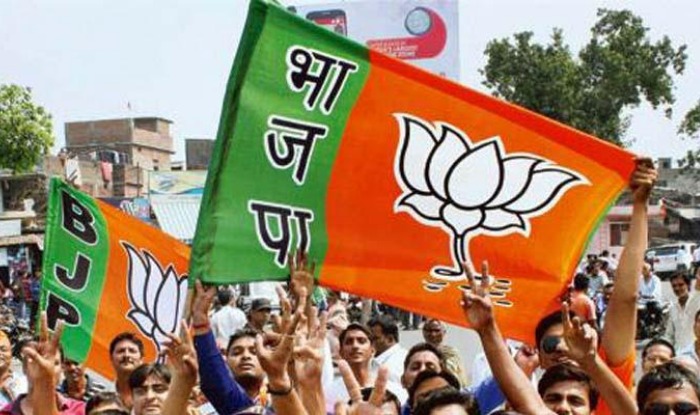 The BJP victory in 2014 came mainly from Uttar Pradesh, Bihar, Rajasthan and Madhya Pradesh. These four states can decide who will rule Delhi. Hence, the formula that will be worked out is to have a grand alliance between the Samajwadi Party and BSP in Uttar Pradesh and rope in the RJD for Bihar.
The BJP victory in 2014 came mainly from Uttar Pradesh, Bihar, Rajasthan and Madhya Pradesh. These four states can decide who will rule Delhi. Hence, the formula that will be worked out is to have a grand alliance between the Samajwadi Party and BSP in Uttar Pradesh and rope in the RJD for Bihar.
This Hindi belt (some call it the cow belt) alliance will keep the Congress at bay because the grand old party headed by Rahul Gandhi is hated in UP and Bihar. It has been proved that anyone entering into an alliance with the Congress is bound to lose. It happened to SP when Akhilesh Yadav entered into an alliance with the Congress in the previous elections. Hence, this time, Akhilesh kept the marginalised Congress to where it rightly belongs – on the margins.
But in Rajasthan and Madhya Pradesh, the SP-BSP-RJD alliance will allow the Congress a free hand. This is because, unlike UP and Bihar, Rajasthan and MP are led by strong Congress local leaders in Sachin Pilot and Jyotiraditya Scindia. If the Congress is able to cap the infighting in these states, the party would romp home both in the Assembly elections and Lok Sabha polls.
In a way, there is an emergence of young leadership ready to take on Modi – Akhilesh in UP, Tejeswi Yadav in Bihar, Sachin Pilot in Rajasthan and Jyotiraditya Scindia in MP. Add to this anti-BJP forces like Mamta Banerjee, Shiv Sena and the Left parties. That will be the line up for 2019.
And these young leaders are ready to dump old baggage and test new grounds. Akhilesh Yadav was quick to go and meet his father’s arch rival Mayawati to thank her and announce that he is ready to bury the past and work with the BSP supremo.
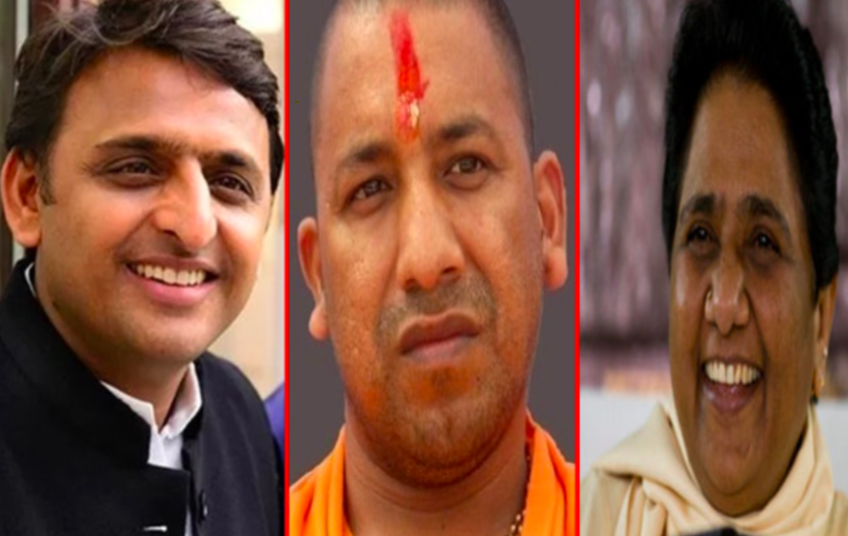 All this looks fine now, but when it comes to who will be the PM candidate, the alliance may fracture and fall apart. There are talks in Delhi that Mayawati may be propped up as PM candidate from the UP-Bihar belt and a strong Congress candidate from the Rajasthan-MP lobby as deputy PM to keep the Congress happy. Rahul Gandhi will continue as the Congress president with wider powers or even be made the convenor of the two alliances emerging from Hindi belt in the east, west and south – UP-Bihar in the east, Rajasthan in the west and MP in the south of the Hindi belt.
All this looks fine now, but when it comes to who will be the PM candidate, the alliance may fracture and fall apart. There are talks in Delhi that Mayawati may be propped up as PM candidate from the UP-Bihar belt and a strong Congress candidate from the Rajasthan-MP lobby as deputy PM to keep the Congress happy. Rahul Gandhi will continue as the Congress president with wider powers or even be made the convenor of the two alliances emerging from Hindi belt in the east, west and south – UP-Bihar in the east, Rajasthan in the west and MP in the south of the Hindi belt.
Maya will be able to galvanise the Dalit votes from across India and the OBCs and minorities may also sail with her.
The Hindi belt alliance will give greater powers to regional satraps like Mamata Banerjee in Bengal, Chandrababu Naidu in AP, KCR in Telangana and the Dravidian parties in power in TN. As local leaders emerge with regional demands and pulls, it is the concept of a unified nation that would suffer.
But what needs to be noted here is that the SP’s victory in the UP by-polls was not just about the alliance with the BSP alone. It was a combination of three masterstrokes by Akhilesh made within a fortnight ahead of the polls.
Firstly, Akhilesh kept a safe distance from Congress. This buoyed the spirits of party workers who were unhappy over their alliance for the 2017 assembly polls.
Secondly, he stitched together an alliance of at least eight other parties, including some with little state-level presence but with a strong hold on some castes and communities particular to the Gorakhpur and Phulpur region.
Thirdly was the choice of candidates. Akhilesh teamed up with the Nirbal Indian Shoshit Hamara Aam Dal (NISHAD) Party and Peace Party and then fielded Pravin Nishad from Gorakhpur. Pravin is the son of NISHAD chief Sanjay Nishad. The move proved a masterstroke as the Nishad community is the largest sub-caste of OBC in the constituency, comprising 3.5 lakh or roughly 17% of the total electorate. The BSP was only happy supporting Pravin Nishad.
Similarly, in Phulpur, the party fielded Nagendra Pratap Singh Patel to focus on the sizeable chunk of Patels in the region. SP’s choice of candidates in the two seats made it easy for BSP to support it. Akhilesh also reached out to NCP, CPM and other Left outfits like the BKP (Male), Forward Bloc, RLD, Pragatisheel Manav Samaj Party and likes. They all announced their support to the SP candidate.
 All this will make the BJP go back to its drawing board. While many are predicting the beginning of the end of the BJP, it would be a mistake to forecast the effect of the recent bypolls on a long-term basis for the following reasons:
All this will make the BJP go back to its drawing board. While many are predicting the beginning of the end of the BJP, it would be a mistake to forecast the effect of the recent bypolls on a long-term basis for the following reasons:
First, the turnout was low (47.5 per cent in Gorakhpur and 37.4 per cent in Phulpur). This usually happens in a by-poll. Since 1964, the average turnout in by-elections in UP is 41 per cent, against the 51 per cent in the same seats in general elections. This factor played in favour of the alliance. But the BJP needs to think why the middle class kept away. Is there an anger building up? Are they upset demonetisation and GST? Or are the BJP’s footsoldiers angry at Modi and Amit Shah deciding everything with a top to down leadership structure? In such a leadership structure the danger is that you do not hear voices from the ground.
Second, it is not unusual for Lok Sabha by-polls to have an elite character or strong symbolic overtones, given the profile of the individuals who relinquish their seat, either by switching House, seat, state, or due to their demise. Rajiv Gandhi succeeded his brother in Amethi in 1980 in a by-election. Neeraj Shekhar, son of former Prime Minister Chandra Shekhar, retained his father’s seat in Ballia after his demise in 2008.
Third, the Lok Sabha by-elections are not good predictors of the future results. Among the 35 by-elections that have taken place between 1962 and 2014 in UP, only 11 results matched the party that won the following general election. By-election winners also matched the party in power at the state level at the time in 58 per cent of the cases.
Fourth, can we say that these by-elections speak of a successful SP-BSP alliance in 2019? No doubt that such an alliance would be a force to reckon with. But this alliance remains a far-fetched idea for three reasons. First, there is a history of acrimony between the leaders of both parties. Akhilesh may have distanced himself from his father, but Mayawati will never forget her tussles with Mulayam. Given that the next election might be a question of survival for her and her party, she might, however, change her position.
Lastly, there are internal factors working against this alliance. Both parties have historically depended on three types of electoral bases. The first base comes from their core electoral groups (Jatav Dalits and Yadavs). The second base is provided by Muslim voters, who, by and large, have supported candidates from either parties. The third source comes from the candidates themselves, recruited among locally dominant groups, and whose electoral base may or may not coincide with the two parties’ core support bases.
What needs closer look is the third type of support. This is likely to derail an SP-BSP alliance, since a seat-sharing agreement between the two parties means losing half the tickets they may aspire to. Many of them might contest on third-party tickets or even try to get BJP tickets. Or the BJP might prop them up to divide votes.
And finally, should an alliance take shape, it will last as long as there is no power-sharing consideration between the two parties, besides seat-sharing agreements. They may collectively defeat the BJP but they will not be able to govern together. In 2014, the BJP had a strong PM candidate; in 2019 too the party will prop up Modi who can single-handedly take on any alliance.
Hence, the race for 2019 remains wide open and the BJP will have to come up with new strategies – either find new friends or try to break up the alliance.































